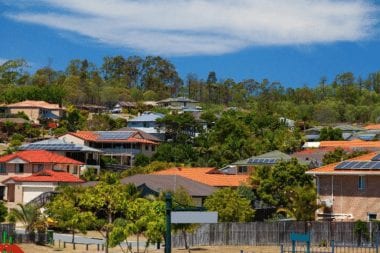Former opposition leader Peter Dutton declared the 2025 federal election a “referendum on energy.” But in his own Queensland electorate of Dickson, the voters had already cast their verdict with their wallets: over 60% of households had installed rooftop solar.
The Liberal and National parties turned their backs on their rooftop solar constituents. The results were swift and brutal. Dutton lost his seat. Shadow energy minister Ted O’Brien suffered a 5.4% swing to Labor in Fairfax, another Queensland electorate that embraces solar. And in Fisher – the federal seat with the highest rooftop solar uptake in the country at 68% – the Liberal National Party saw a 7.3% swing away from them in a razor-tight race.
While some politicians in the Coalition remained fixated on nuclear power, the Australian public firmly rejected nuclear. The idea simply doesn’t resonate with everyday Australians who have already taken tangible steps toward energy independence and lower power bills.
In the lead-up to the election, Solar Citizens made repeated efforts to engage with the Liberal Party, warning them about the serious risks in their nuclear proposal.
These included capping renewable energy capacity in the grid, which would lock out new rooftop solar installations; threatening existing rooftop solar investments through forced “nuclear switch-off” policies; and redirecting taxpayer money to fund nuclear reactors when the same investment could provide every home solar plus a battery, three times over.
While the Coalition was creating nuclear uncertainty, Solar Citizens was hard at work pushing practical solutions. We continued our three-year campaign for a federal home battery rebate – a policy designed to reduce energy bills and improve grid reliability.
That’s why we welcomed energy minister Chris Bowen’s Cheaper Home Batteries program which will reduce the cost of batteries by up to 30% for solar households. Home batteries allow homes to store and use their own solar energy at night, reducing reliance on expensive gas-fired power and making our energy system more resilient.
Large-scale energy storage investments, such as those being funded through the Capacity Investment Scheme, are already helping to protect Australians from the kind of energy system breakdown seen in Spain last month.
According to the Australian Energy Market Operator (AEMO), we need 8 GW or one million home batteries by 2030 to firm the grid and keep prices down. Batteries soak up abundant daytime solar and make that power available at night – relieving pressure on the grid and helping households ride through blackouts*.
Offering Cheaper Home Batteries proved to be a vote-winner across the country. With the election delivering 102 ALP, Green, and community independent MPs in the House of Representatives – and 39 ALP and Green Senators, plus Senator David Pocock in the Senate – Australians now have a Parliament positioned to take bold steps on renewable energy and energy equity.
But while rooftop solar is a runaway Aussie success, we must confront the stark reality: millions of Australians remain locked out of the clean energy revolution. Renters, apartment dwellers, and people in social housing still face significant barriers to accessing rooftop solar and its financial benefits.
In his election night victory speech, Prime Minister Anthony Albanese said: “Together we will make our way forward with no one held back and no one left behind.” That promise must now be realised in energy policy.
In their first term of government, the Albanese Government made some encouraging commitments:
– $800 million for energy efficiency upgrades in social housing, including solar;
– A $1 billion Household Energy Upgrades Fund for low-interest loans;
– A national Consumer Energy Resources Roadmap;
- – And New Vehicle Efficiency Standards that help Australians run their cars on sunshine.
Now, in this second term, we need to see these commitments rolled out at scale — and backed by higher ambition across both houses of Parliament. We must ensure that the cost-saving benefits of clean energy are available to all, especially those who need them most.
That’s why Solar Citizens is calling on the Albanese Government to:
– Establish a task force to enable rooftop solar for renters;
– Expand federal programs to electrify and upgrade apartment buildings;
– Commit to delivering rooftop solar on at least 30% of social housing nationwide, with energy efficiency upgrades available to all social housing.
Taking bold steps to close the clean energy gap will not only bring justice to those left out, but it will also help cut emissions, supporting Australia’s bid to host the COP31 International Climate Conference next year.
Solar should never be a political football – it’s about fairness, savings, and resilience. Of the nearly four million Australian households reaping the benefits of rooftop solar, most are mortgage belt families and retirees. That’s because the people who feel the sting of power bills the most are the ones who understand the value of solar savings.
We’re already a world leader in rooftop solar. By extending this success to everyone, we can create an Australian clean energy story to be proud of – and one worth sharing on the global stage.
Heidi Lee Douglas is CEO of Solar Citizens, Australia’s advocacy voice for people who have – or want to have – homes and transport powered by clean energy.







